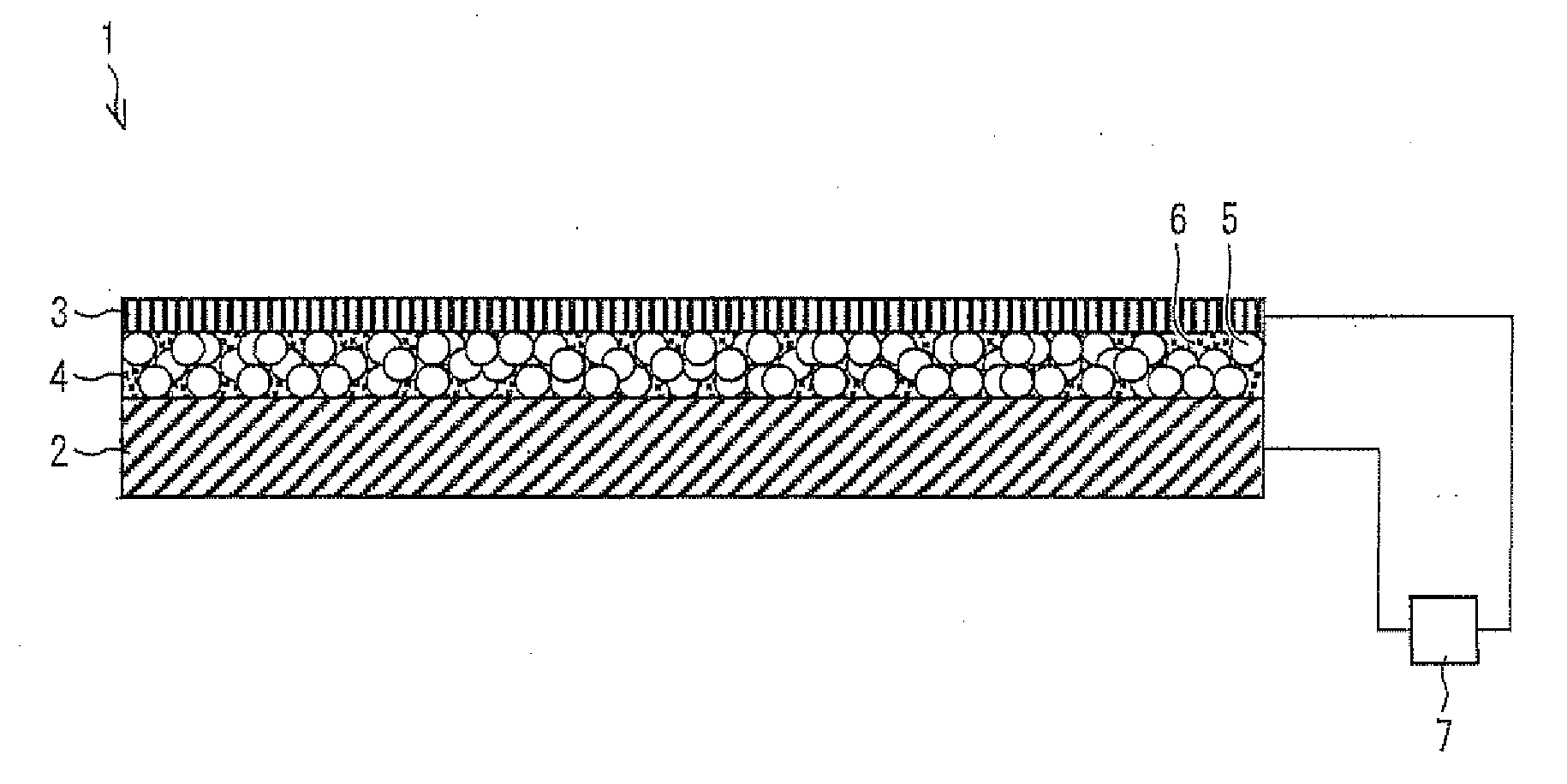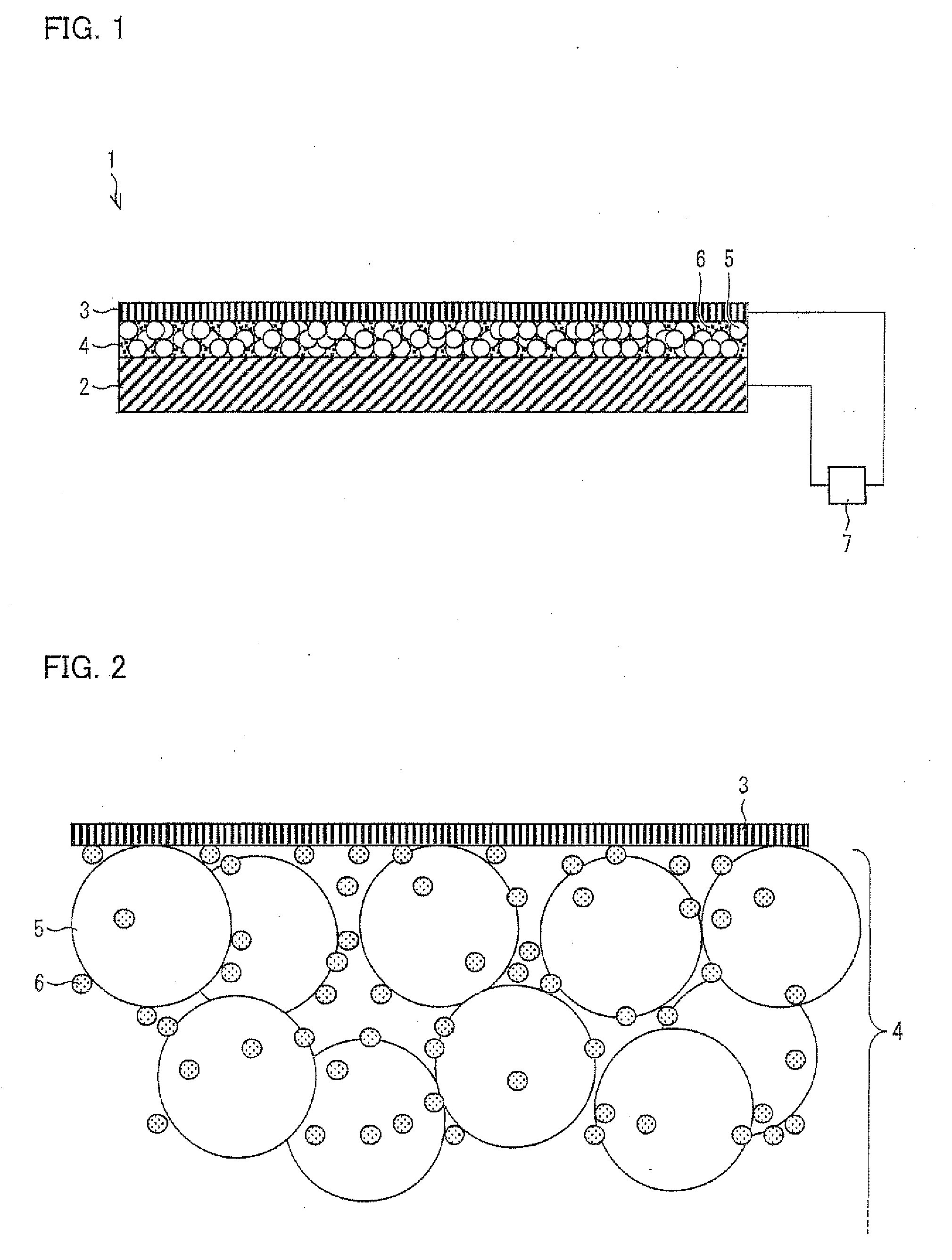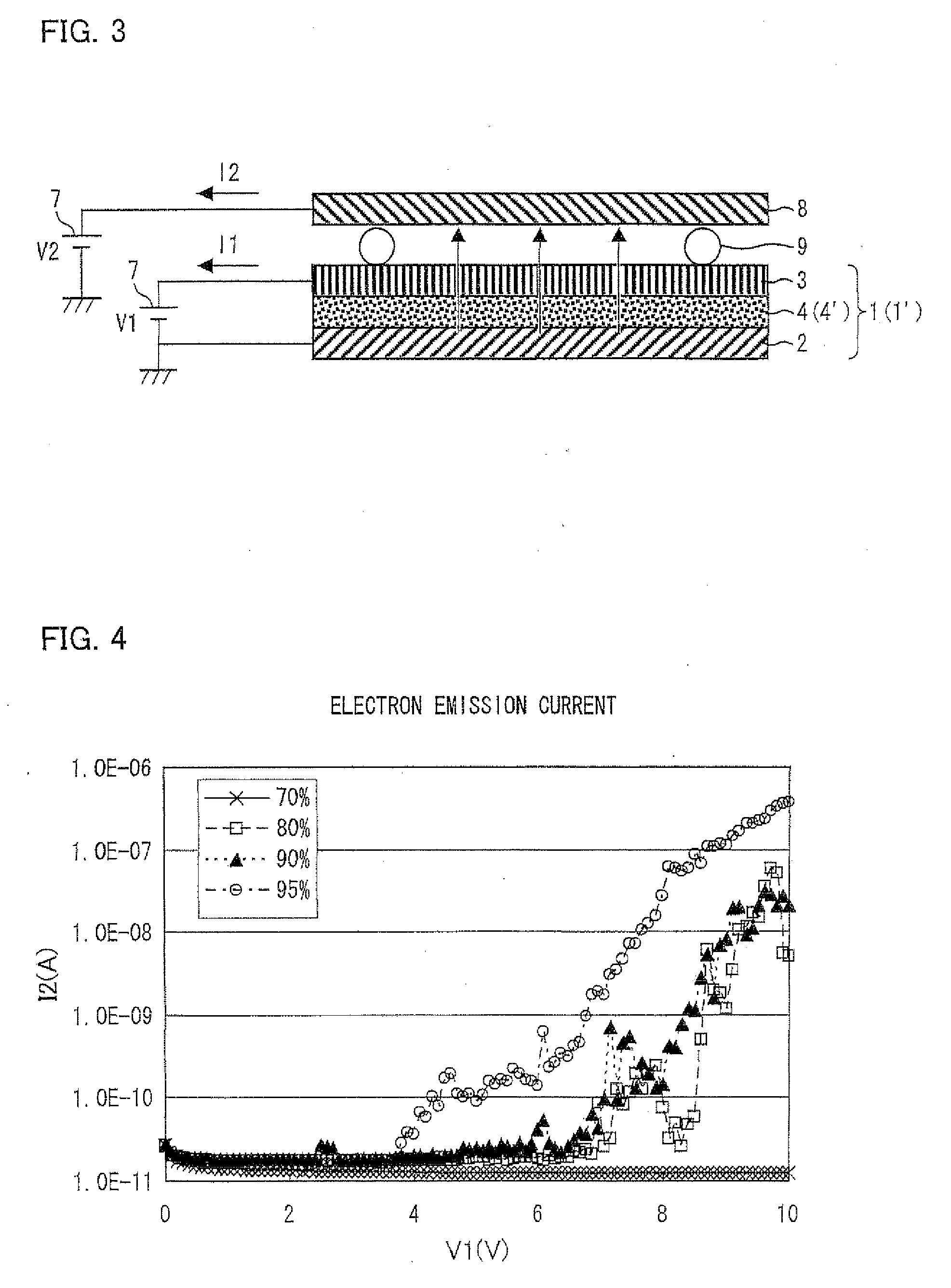Electron emitting element, electron emitting device, light emitting device, image display device, air blowing device, cooling device, charging device, image forming apparatus, electron-beam curing device, and method for producing electron emitting element
- Summary
- Abstract
- Description
- Claims
- Application Information
AI Technical Summary
Benefits of technology
Problems solved by technology
Method used
Image
Examples
embodiment 1
[0076]FIG. 1 is a schematic view illustrating an embodiment of an electron emitting element of the present invention. As illustrated in FIG. 1, an electron emitting element 1 of the present embodiment includes a substrate (electrode substrate) 2 serving as a lower electrode, an upper electrode (thin-film electrode) 3, and an electron acceleration layer 4 sandwiched between the substrate2 and the upper electrode 3. Further, the substrate 2 and the upper electrode 3 are connected to a power supply 7, so that a voltage can be applied between the substrate 2 and the upper electrode 3 which are provided so as to face each other. The electron emitting element 1 applies a voltage between the substrate 2 and the upper electrode 3 so that current flows between the substrate 2 and the upper electrode 3, that is, in the electron acceleration layer 4. A part of electrons in the current are caused to transmit through the upper electrode 3 or be emitted through gaps in the upper electrode 3 as ba...
example 1
[0094]The following explanation deals with an example of an electron emission experiment by use of the electron emitting element of the present invention, with reference to FIG. 3 through FIG. 7. This experiment is merely an example of the present embodiment and by no means limits the present invention.
[0095]In the present example, five different kinds of electron emitting elements 1 were produced so that each electron emitting element 1 had a different composition of the insulating fine particles 5 and the metal fine particles 6 whose surfaces an insulating material (adhering substance) was attached to in the fine particle layer 4.
[0096]A 30 mm square SUS substrate was used as the substrate 2. On this substrate 2, the fine particle layer 4 was formed by the spin coating method. A solution used in the spin coating method was a solution which included the insulating fine particles 5 and the metal fine particles 6 whose surfaces an insulating material was attached to. The solution was...
example 2
[0107]In the present example, four kinds of electron emitting elements 1 were produced so that, while compositions of the insulating fine particles 5 and the metal fine particles 6 whose surfaces an insulating material was attached to were the same as those in Example 1, a layer thickness of the fine particle layer 4 was changed by changing condition for film formation of the fine particle layer 4.
[0108]Regarding the insulating fine particles 5 and the metal fine particles 6 which were dispersed in a dispersion solution to be used in spin coating, a composition ratio of the insulating fine particles 5 and the metal fine particles 6 whose surfaces an insulating material was attached to was adjusted such that a ratio by weight of the insulating fine particles 5 with respect to the total amount of the insulating fine particles 5 and the metal fine particles 6 was 80%. Film formation under the above described condition for film formation was carried out once or five times according to t...
PUM
 Login to View More
Login to View More Abstract
Description
Claims
Application Information
 Login to View More
Login to View More - R&D
- Intellectual Property
- Life Sciences
- Materials
- Tech Scout
- Unparalleled Data Quality
- Higher Quality Content
- 60% Fewer Hallucinations
Browse by: Latest US Patents, China's latest patents, Technical Efficacy Thesaurus, Application Domain, Technology Topic, Popular Technical Reports.
© 2025 PatSnap. All rights reserved.Legal|Privacy policy|Modern Slavery Act Transparency Statement|Sitemap|About US| Contact US: help@patsnap.com



